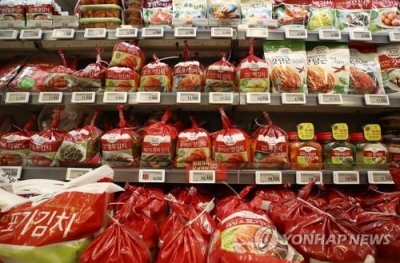Number of firms in Korean food business drops in 2024: Data
By IANS | Updated: July 28, 2025 10:04 IST2025-07-28T09:59:16+5:302025-07-28T10:04:39+5:30
Seoul, July 28 The number of restaurants and companies engaged in Korean food, or hansik, business slightly dropped ...

Number of firms in Korean food business drops in 2024: Data
Seoul, July 28 The number of restaurants and companies engaged in Korean food, or hansik, business slightly dropped from a year ago in 2024, government data showed on Monday.
A total of 504,657 businesses were operating in the local market for traditional Korean food as of end-December, down 1.6 percent from 512,979 a year earlier, according to the data from the Ministry of Agriculture, Food and Rural Affairs and the Korea Food Promotion Institute.
Employees working in the Korean food businesses totalled 1.3 million, up 0.8 percent on-year. Of them, 1.08 million worked in the restaurant sector, while 214,286 were employed at manufacturing businesses.
The number of restaurants and bars serving hansik and sales generated from Korean menus dropped by 2.1 percent and 3.9 percent on-year, respectively.
In contrast, the number of Korean food manufacturing businesses grew 3.5 percent, while sales generated from selling Korean food products jumped 17.1 percent during the cited period.
The share of respondents that said Korean dishes served at restaurants were close to traditional Korean cuisine fell 1.9 percentage points to 80.7 percent, data also showed.
Meanwhile, foreigners who have experienced South Korean pop culture associate the country with its popular music, dubbed K-pop, more than any other form of content, a government report showed on Monday.
The annual report by the Ministry of Culture, Sports and Tourism and its affiliate, the Korean Foundation for International Cultural Exchange, showed that 17.8 percent of respondents with prior exposure to Korean pop culture said they first thought of K-pop when thinking of South Korea.
This was the eighth consecutive year in which K-pop topped the category.
Korean cuisine, or hansik, ranked second with 11.8 percent, followed by K-drama at 8.7 percent.
Disclaimer: This post has been auto-published from an agency feed without any modifications to the text and has not been reviewed by an editor
Open in app